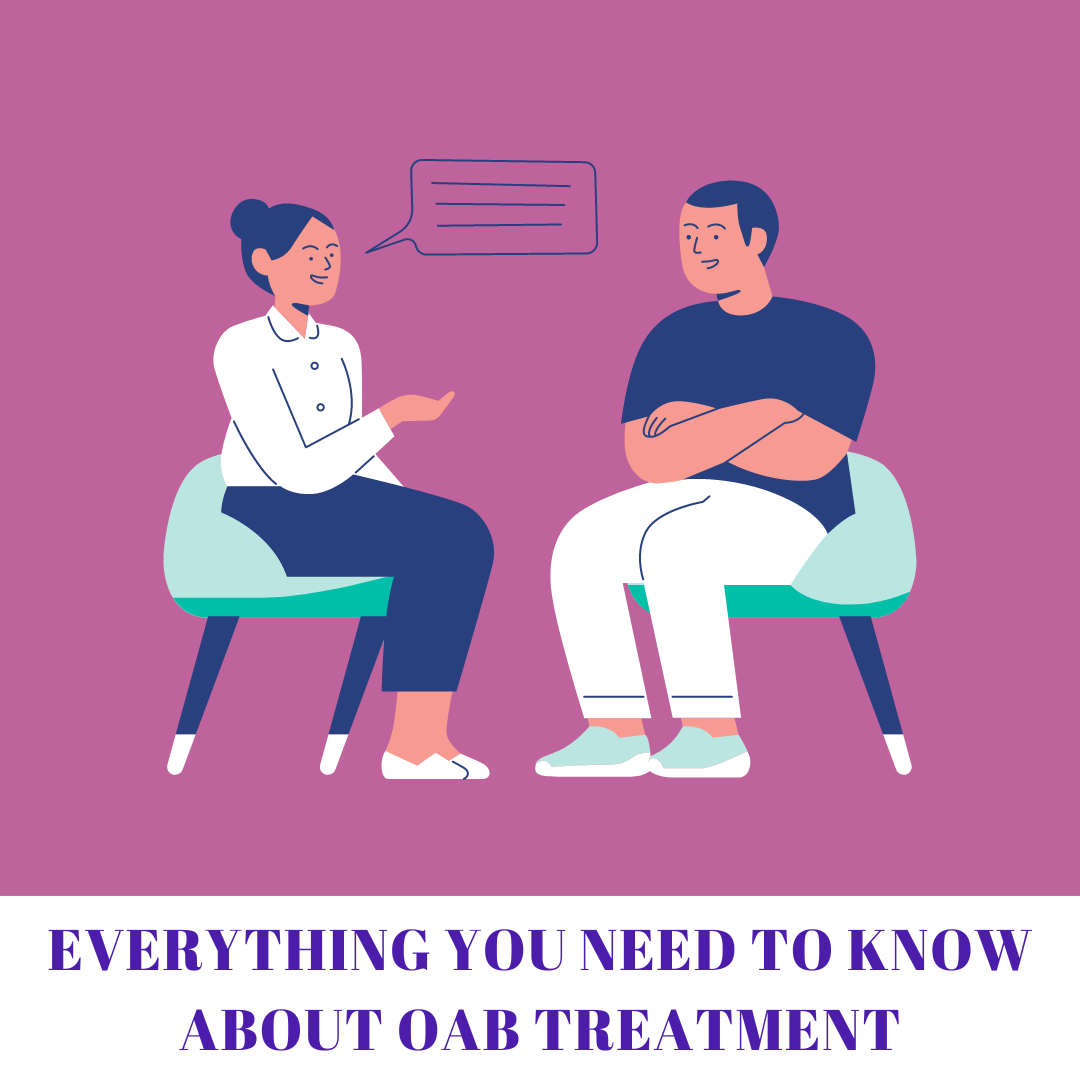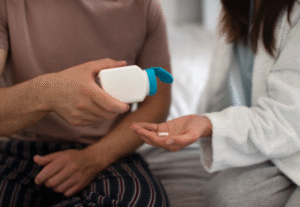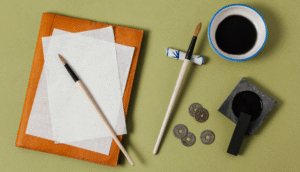
overactive bladder symptoms
Symptoms of an overactive bladder are serious. You’ve come to the correct page if you’re someone who feels like your toilet routine is being judged. Be assured that you are not alone before we proceed and inform you of every reason causing you distress. Symptoms of an overactive bladder impact at least 3 out of 10 males and 4 out of 10 women in the United States. Together, let’s learn more about this and make improvements to our lives.

Overactive Bladder: What is it?
Let’s take your worry off by saying that overactive bladder (OAB) is not an illness. You did indeed read it right. Instead, it is a collection of Urological Issues. Avoid being afraid. The urge to urinate is heightened by this. In essence, this forces someone to occasionally use the restroom. Treatments for hyperactive bladders will be discussed shortly. To begin with, determine what symptoms of an overactive bladder genuinely fall under.
Symptoms of Overactive Bladder(OAB)
To be honest, some people don’t even know that they are going through overactive bladder symptoms. Sadly, many of us feel ashamed about our discomfort in front of healthcare professionals. Additionally, some people confuse overactive bladder symptoms with their “growing old” symptoms. And, this is not true. Let us give you some quick ideas about OAB symptoms:
- Uncontrollable urgency to pee
- In volunteer urine leakage
- Need to pee at night more than once
We need to assure you that just because you have one or two similar symptoms as mentioned above, it doesn’t necessarily mean you have OAB. Please do not self-diagnose. Overactive bladder treatment is even possible without any surgery. So, don’t panic and visit your nearby healthcare.
Also read: Health and Wellness Importance in 2025: Am I healthy?
Reasons for Overactive Bladder Symptoms
Are you thinking about the root causes of an overactive bladder? Then, you deserve an answer. An answer that does not contain “You-are-just-being-old/normal/women”. We feel for you if you ad encountered a similar response from someone. But, to make you feel better, we will give scientifically diagnosed causes for your overactive bladder symptoms.
- Drinking excessive fluid (obvious, right?)
- UTI (Urinary tract infections)
- Bladder stones
- Damaged nerves in your bladder
- Certain medications
Explicitly speaking, a healthy bladder’s job is to signal your brain to urinate when your bladder is full. You can always wait in this case. But the scenario is slightly different for people with an overactive bladder. For them, the “wait” part is relatively missing. Since there is an improper function between the nerve in the brain and the muscle of the bladder, they require treatment for an overactive bladder.

How to Treat Overactive Bladder Symptoms
So, now we will be doing the real talk. Before you take any advice to your heart and start to follow mindlessly, make sure the adviser is worthy enough to start. There are multiple options healthcare professionals choose to overcome overactive bladder symptoms.
Most importantly, doctors start their treatment at home in most cases. Guess what? It even starts with lifestyle changes. We are listing some approved and useful treatments for OAB.
- Lifestyle changes
Firstly, the best you can do to have better health is to improve your lifestyle. For the betterment of your bladder problems, doctors advise you to retain yourself from tea, caffeine, and juices with artificial sweeteners.
- No to tobacco
Secondly, studies have shown that a smoker’s cough can irritate your bladder. So, say bye to tobacco and hi to life.
- Regular exercise
Improving the strength of pelvic muscles can do wonders in overactive bladder treatments. If you can follow some Pelvic Floor Exercises guided by professionals, you are already winning.
- Medication
Lastly, just like other health problems, people with overactive bladder symptoms can use some medications. These prescribed medications remove bladder irritation and provide support to frequent urges.
Always remember that different individuals need different times and medication to improve. Once, diagnosed with OAB treatments, one can start to live their full lives within 12 weeks. However, the treatment and improvement of health depend on the doctor and patient simultaneously.
Disclaimer: As you’re retraining your bladder, a healthcare provider may prescribe medication.
-Cleveland Clinic
(So, be wise and listen to your doctor. )
Read Also: Does Raw Milk Benefit Your Health? Think again! Myths Busted
Conclusion
An overactive bladder makes life slightly more difficult than for others. Don’t forget to be patient with others. And be easy on yourself. Generally, OAB is treatable. Be prepared to answer some slightly uncomfortable questions during the doctor’s visit. Another helpful way to deal with this, question your doctors about your confusion about the problem and treatment procedure. Because it is equally important.
If you are feeling too weak to go alone, ask for help from a friend or family (don’t limit your expectations). No one wants to live an uncomfortable life, and we totally understand talking freely about your urinary problem to a doctor. If it helps, then know that we don’t judge you. Rather, it is the doctor’s job to make you feel better.
Till then, hope you had a good read. Follow us and let us know which topic you need us to discuss next.
FAQs
1. What are the treatments for an overactive bladder?
Overactive bladder (OAB) can be treated through behavioural therapy, medications, and in some cases, surgical intervention.
-
Lifestyle changes (fluid management, bladder training)
-
Pelvic floor exercises (Kegels)
-
Medications such as anticholinergics and beta-3 agonists
-
Neuromodulation therapy (e.g., sacral nerve stimulation)
-
Botox injections into the bladder muscle
Combining multiple approaches often provides the best results.
2. What are the symptoms of an overactive bladder in females?
Overactive bladder symptoms in females may include:
-
Sudden, strong urge to urinate (urgency)
-
Frequent urination (typically more than 8 times a day)
-
Nocturia (waking up more than once at night to urinate)
-
Urge incontinence (involuntary loss of urine after feeling urgency)
These symptoms can significantly impact daily life, including work, sleep, and social activities.
3. What is the main cause of an overactive bladder?
The main cause of OAB is the involuntary contractions of the bladder muscles, even when the bladder isn’t full. Common underlying reasons include:
-
Neurological disorders (e.g., Parkinson’s disease, MS)
-
Bladder abnormalities (e.g., tumours, bladder stones)
-
Urinary tract infections (UTIs)
-
Ageing-related changes in the bladder
-
Unknown (idiopathic) causes in many cases
Stress and high caffeine intake may also worsen symptoms.
4. What is the best medicine for an overactive bladder?
The best medication depends on the individual, but commonly prescribed ones include:
-
Anticholinergics (e.g., oxybutynin, tolterodine) – reduce bladder spasms
-
Beta-3 adrenergic agonists (e.g., mirabegron) – relax bladder muscles
-
Combination therapy – some patients respond better to using both classes
Always consult a healthcare provider to determine the right medication based on medical history and tolerance to side effects.
5. What medications are used to treat an overactive bladder?
Overactive bladder is typically treated with the following medications:
-
Oxybutynin (Ditropan, Oxytrol)
-
Tolterodine (Detrol)
-
Solifenacin (Vesicare)
-
Darifenacin (Enablex)
-
Fesoterodine (Toviaz)
-
Mirabegron (Myrbetriq) – a newer class with fewer anticholinergic side effects
These help control urgency, frequency, and urge incontinence by calming the bladder muscle.







Thanks for sharing. I read many of your blog posts, cool, your blog is very good.